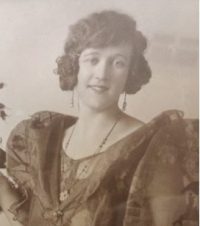Today we expected a raid, as planes flew overhead, but they headed for some other destination. Food is getting scarce. One can of Quaker Oats (1 lb) costs 700 Pesos. KLIM (powdered milk), a 21⁄2 lb can, costs 2,000 Pesos. Pork remains at 100 Pesos a kilo, but carabao or horse meat costs 60 Pesos a kilo. I would like to mention that our money is not the same as the bills we used before the war. Before the war, one Peso (now referred to as “genuine” money) was equivalent to U.S. $1. After the war broke out, “genuine” money was no longer used and “emergency notes” were printed. This did not have the same value as the “genuine” money. Later on during the war, the Japanese also printed bills which were known as “Japanese” money. Sometimes they were referred to as “Mickey Mouse’ money. At this point in the war, one cannot really compare the value of this money to the pre-war Peso. All we know is that the prices are sky-high and everything costs in the hundreds and thousands of Pesos (“emergency” and “Japanese” Pesos).
Two nights ago the Carmelite Convent (located in the outskirts of Jaro) was robbed. There are also civilians living there who have taken refuge. The looters climbed over the high walls and demanded that the doors be opened under threat of shooting.
